The Das Keyboard 'Prime 13' & '4 Professional' Mechanical Keyboard Review
by E. Fylladitakis on January 10, 2017 8:00 AM ESTThe Das Keyboard 4 Professional Mechanical Keyboard
The Das Keyboard 4 Professional is a postmodern design, with the company trying to balance between a minimalistic and a futuristic appearance. The asymmetric body consists of an aluminum top cover and a plastic lower frame, with the company logo printed at the top right corner of the keyboard. Note that the top aluminum frame is for aesthetics only and not for mechanical cohesion, as the keyboard's keys and PCB are internally supported by a steel plate.
We received the US layout version of the Das Keyboard 4 Professional. It is a standard 104-key keyboard that fully adheres to the ANSI layout, with a normal bottom row. The bottom row of the keyboard has a 6.25× Spacebar and seven 1.25× bottom row keys. Virtually the only slight exception is that the company printed their own logo on the "Windows" keys instead of Microsoft's.
The keycap characters of the Das Keyboard 4 Professional are laser etched. Laser etching is a common feature among keyboards with price tags this high, yet we should note that there can be great quality differences between different manufacturers. With this process, the etching removes part of the paint on the keycap to reveal the unpainted plastic underneath; therefore the character cannot fade because the character itself actually is the only part of the keycap that is not painted. The paint of the keycap however can fade, meaning that the keycap will eventually start becoming smoother and blurry. In such cases, it all comes down on the quality of the keycap and its painting. Unfortunately, we cannot comment on the long term reliability of the process as it would take at least several weeks of testing. The relatively small characters on the keycaps of the Das Keyboard 4 Professional are very sharp.
There are no macro keys on the Das Keyboard 4 Professional and the keyboard has no reprogramming/layout changing capabilities - at least not without with assistance from third party software. At the top right corner of the keyboard we can see a large volume wheel and five low-profile buttons. Three of the buttons are for basic media controls, the round button is for muting the sound volume and the square button is, by default, sending a sleep command to the PC. This can be very handy for quickly putting a PC to sleep/lock and then waking it up from the keyboard without having to reach for the tower, especially in office/working environments where people cannot just leave their posts with their PCs on. The volume wheel is immaculately integrated onto the keyboard and has a satisfactorily clicky feeling when used.
The designer placed two USB 3.0 ports at the rear top right corner of the keyboard. Note that we rarely see USB 3.0 hubs on keyboards, even on some of the most expensive models out there. The Das Keyboard 4 Professional has only one thick cable that ends up to a single USB 3.0 connector. If the keyboard is connected to a USB 3.0 or 3.1 port, the port should provide enough power for the keyboard and its two USB 3.0 ports. If however it is connected to a USB 2.0/1.1 port, the hub might not operate properly.
Beneath the keycaps we find original Cherry MX switches. Our sample came with Brown switches but there is also a version with Blue switches for those that prefer to have a strong audible feedback. The strange part is that we found Costar-type bar stabilizers beneath the larger keys rather than the usual cross-type stabilizers we usually find on Cherry-based motherboards. There is very little difference on the actual feeling of the key when comparing the two stabilization methods, but keycaps with costar-type stabilizers tend to wiggle a little more and can be a pain to remove. Combined with the fact that the company does not provide a keycap puller, the designer really did not mean for the user to be removing the keycaps on this model.
Removing the core of the Das Keyboard 4 Professional from its exterior frame reveals that the keyboard is built on two PCBs. The main PCB features only the keys and is attached to a steel plate that provides the usual excellent mechanical strength that most mechanical keyboards have, while the second PCB is home for the extra buttons, the USB hub and the ICs.
A Nuvoton NUC123SD4AN0 microcontroller is the heart of the Das Keyboard 4 Professional. Its Cortex-M0 core runs up to 72 MHz and has 68 KB of flash memory. Although it would not be out of the ordinary on a fully-featured gaming keyboard, this microcontroller is a major overkill on a model that has no backlighting and lacks any programmability features. A VIA VL812-Q7 controller handles the USB 3.0 ports.


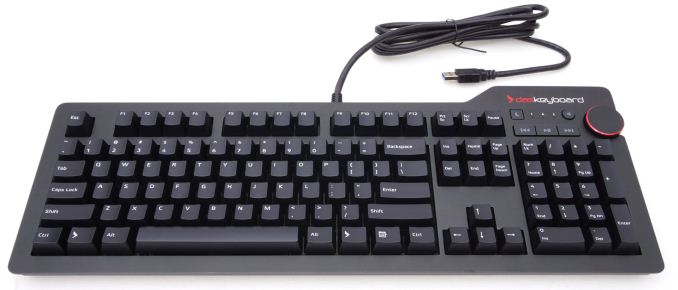
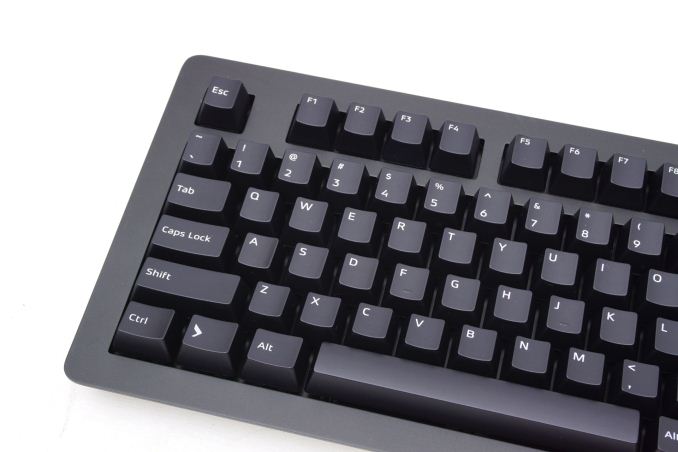
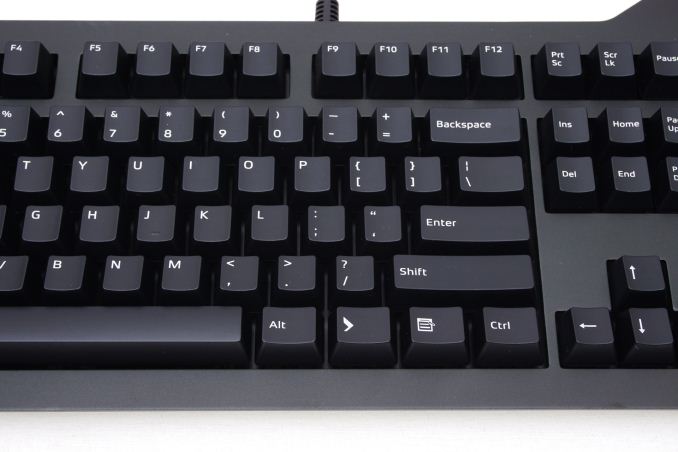

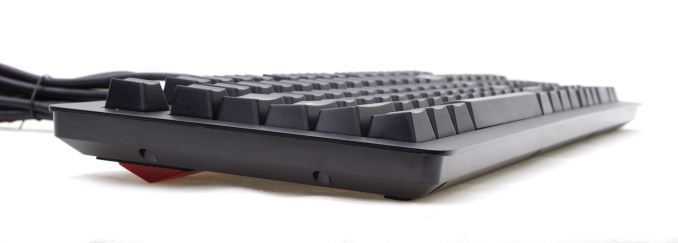
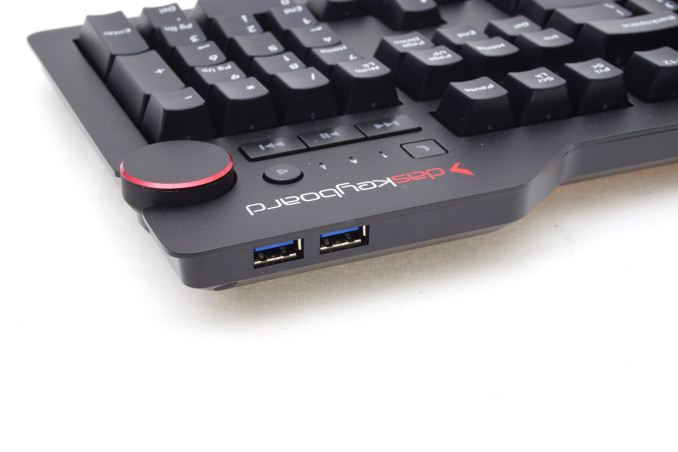

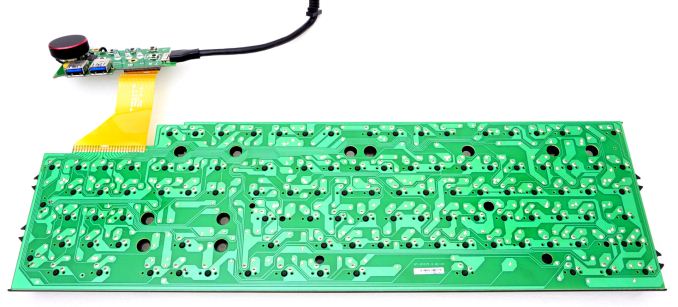
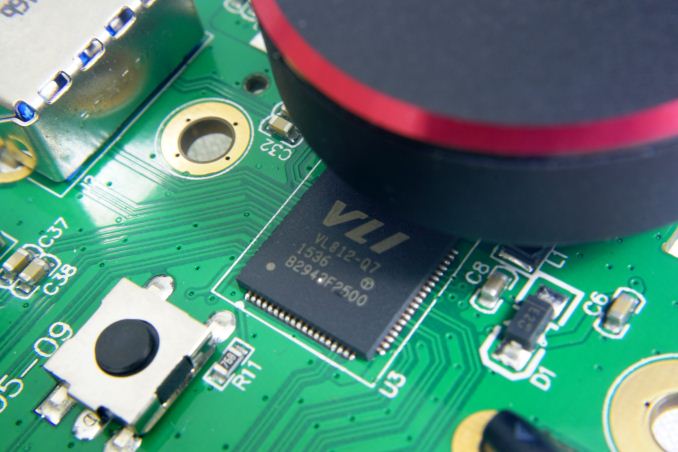
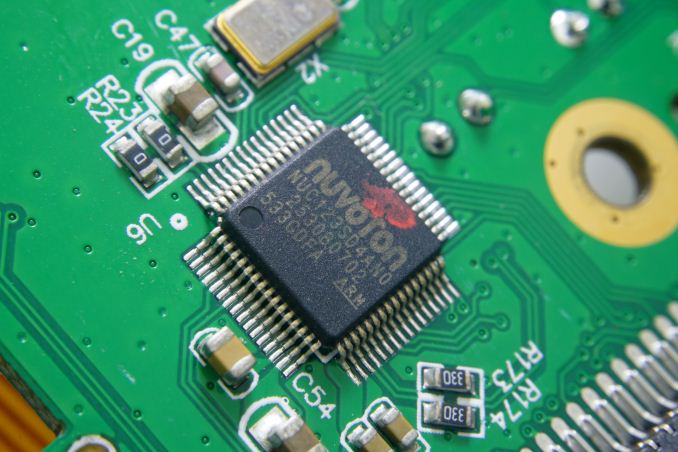








58 Comments
View All Comments
Zan Lynx - Wednesday, January 11, 2017 - link
I noticed a thing in the article that I missed before. The author wrote, "programmers tend to reprogram certain keys to insert ready, frequently repeating code" and I have to say, "No, we don't."We have editors for that. Programmable editors, because we are programmers. Java editors like Eclipse get extensions in Java. Atom in Javascript. Emacs in elisp, VIM in vimscript, LUA or Python. Etc.
No one bothers writing macros for their keyboard. That would be incredibly limiting and a dumb idea.
E.Fyll - Wednesday, January 11, 2017 - link
Well, you don't actually need to write a macro if the software allows you to just copy-paste your code into it. :)Depending on what exactly that is you do, sure you can be using macros to insert common, repeating commands and very efficiently so. I know quite a few people who do that myself. No matter how good the editor is, the code is not going to write itself. For example, Eclipse will create your packages and classes, but it won't start adding things like fields, declarations and strings. Why type "//fields - private field 1/2/3/4...X" when you can just insert it and then just type the field names, then do the same with Constructors and CTRL+Space your way through the code from then on? Unless if Eclipse got a lot smarter since I last used it, and that was several years ago, you certainly need to start typing a lot of repetitive commands when you need to program something.
Programming aside, I even do it when I expect a piece of text, even if it is just a name or cell code, to repeat itself many times in whatever what I'm working on is. I just insert it as a macro by pasting it into the keyboard's software and then just press that button whenever I need to.
Do not mistake that with having the keyboard insert huge chunks of text/code for you; well, at least not if you don't have some weird repeating template that you work on all the time for some very strange reason.
E.Fyll - Wednesday, January 11, 2017 - link
"...in whatever what I'm working on is."And I'm not even drunk.
"...in whatever I'm working on."
Wolfpup - Wednesday, January 11, 2017 - link
Thanks for the review! I've been using mechanical keyboards for some years now, thanks to this site, as the membrane keyboards kept getting worse and worse by the year.I like that Das Keyboard has media controls on their keyboards now-that was the one thing preventing me from buying one before.
I've only used Cherry MX Brown, so it's possible I'd like something else better, but I like them a lot and don't plan on ever using a keyboard that doesn't use Cherry MX.
I'll definitely look at Das Keyboard next time I buy! (Among other things, I've got two Razer keyboards, but they switched from Cherry MX to some offbrand thing they of course claim is better, so I'm done with Razer...)
FunBunny2 - Thursday, January 12, 2017 - link
one note on mechanical keyboards, particularly the Model M and current clones. the M is a membrane keyboard, meaning you have to bottom the key to get the character. Cherry type switches don't require full stroke, and are sometimes credited with being easier on the hands. I worked on Ms for years, and then membranes when I had to. I'm typing on a Das and have been for some years, and still haven't lost the habit of bottoming the stroke.oneoff - Friday, January 13, 2017 - link
The Model M is most assuredly NOT a membrane keyboard.It is an ancient design that uses buckling springs.
FunBunny2 - Saturday, January 14, 2017 - link
-- The Model M is most assuredly NOT a membrane keyboard.it absolutely is. the buckling spring is just the actuation. the "switch" is embedded in a membrane at the bottom: https://en.wikipedia.org/wiki/Model_M_keyboard#Des...
note the animated little thingee on the right.
helvete - Tuesday, February 7, 2017 - link
"This can be very handy for quickly putting a PC to sleep/lock and then waking it up from the keyboard without having to reach for the tower..."I don't see this as an advantage, because:
- you can always set up "Power on by keyboard" settings in BIOS
- and it is _very_ inconvenient to hit a key like this by accident